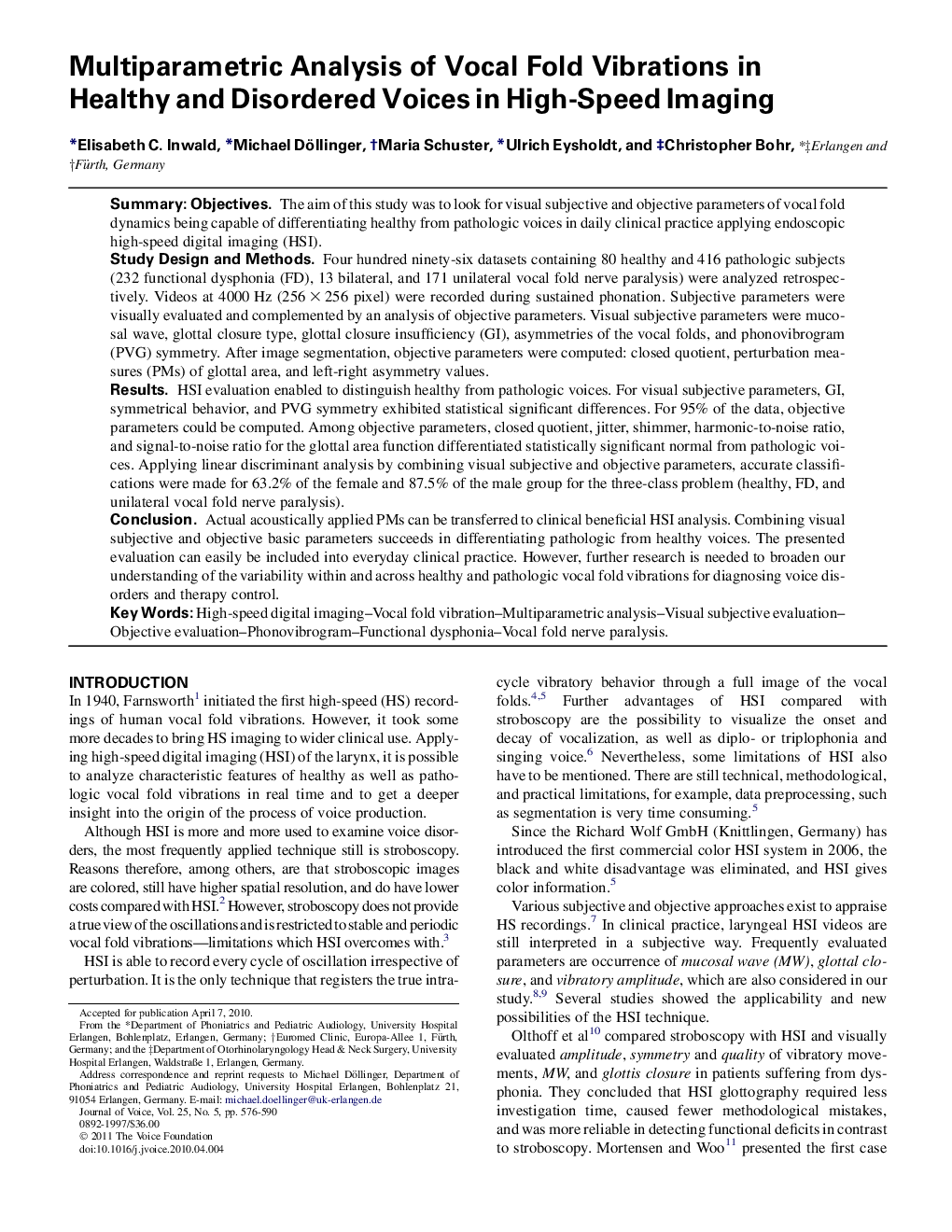| Article ID | Journal | Published Year | Pages | File Type |
|---|---|---|---|---|
| 1102402 | Journal of Voice | 2011 | 15 Pages |
SummaryObjectivesThe aim of this study was to look for visual subjective and objective parameters of vocal fold dynamics being capable of differentiating healthy from pathologic voices in daily clinical practice applying endoscopic high-speed digital imaging (HSI).Study Design and MethodsFour hundred ninety-six datasets containing 80 healthy and 416 pathologic subjects (232 functional dysphonia (FD), 13 bilateral, and 171 unilateral vocal fold nerve paralysis) were analyzed retrospectively. Videos at 4000 Hz (256 × 256 pixel) were recorded during sustained phonation. Subjective parameters were visually evaluated and complemented by an analysis of objective parameters. Visual subjective parameters were mucosal wave, glottal closure type, glottal closure insufficiency (GI), asymmetries of the vocal folds, and phonovibrogram (PVG) symmetry. After image segmentation, objective parameters were computed: closed quotient, perturbation measures (PMs) of glottal area, and left-right asymmetry values.ResultsHSI evaluation enabled to distinguish healthy from pathologic voices. For visual subjective parameters, GI, symmetrical behavior, and PVG symmetry exhibited statistical significant differences. For 95% of the data, objective parameters could be computed. Among objective parameters, closed quotient, jitter, shimmer, harmonic-to-noise ratio, and signal-to-noise ratio for the glottal area function differentiated statistically significant normal from pathologic voices. Applying linear discriminant analysis by combining visual subjective and objective parameters, accurate classifications were made for 63.2% of the female and 87.5% of the male group for the three-class problem (healthy, FD, and unilateral vocal fold nerve paralysis).ConclusionActual acoustically applied PMs can be transferred to clinical beneficial HSI analysis. Combining visual subjective and objective basic parameters succeeds in differentiating pathologic from healthy voices. The presented evaluation can easily be included into everyday clinical practice. However, further research is needed to broaden our understanding of the variability within and across healthy and pathologic vocal fold vibrations for diagnosing voice disorders and therapy control.
